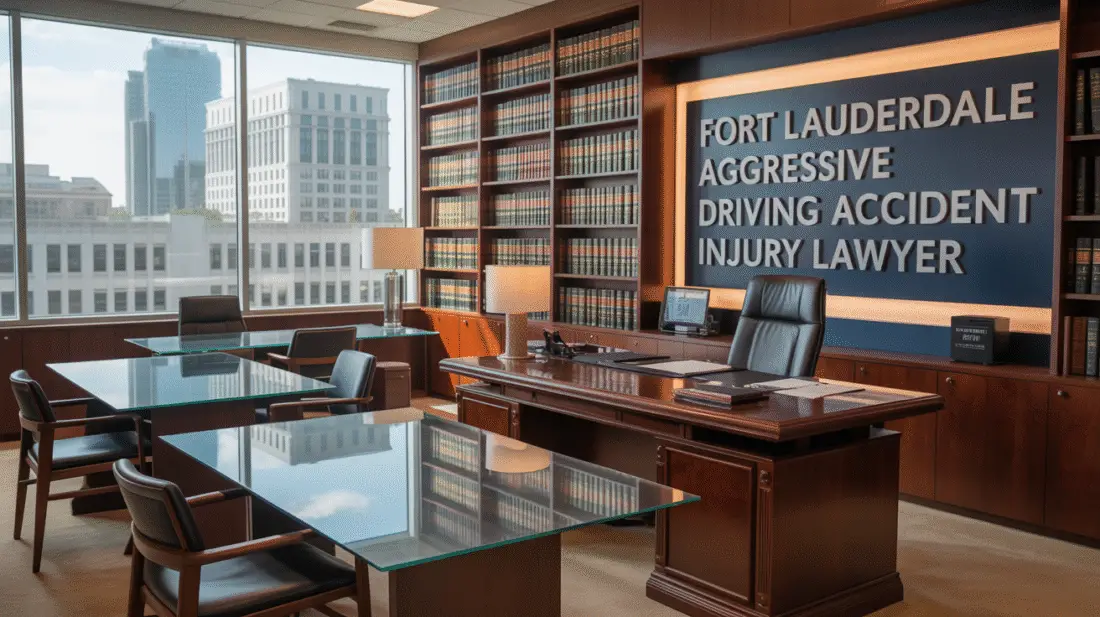As a BetterHelp affiliate, we receive compensation from BetterHelp if you purchase products or services through the links provided
In Fort Lauderdale, call 911 immediately, secure the scene with hazards, and avoid moving the injured unless there’s danger.
Photograph vehicles, damage, debris, and injuries, gather witness contacts, and note cameras nearby.
Seek prompt medical evaluation to document injuries and preserve PIP benefits, then notify your insurer and request UM/UIM confirmation in writing.
Provide police the incident number, photos, and witness details, and avoid recorded statements without counsel.
The Law Offices of Anidjar and Levine can help coordinate the investigation, evidence gathering, deadlines, and maximize your recovery.
For more information, consult a Fort Lauderdale Car Accident Lawyer to understand the essential steps involved.
Key Takeaways
- Call 911 immediately, report the hit-and-run, request police/EMS, and provide location, vehicle description, and any fleeing driver details.
- Ensure scene safety: use hazard lights, set flares/triangles, check for injuries, and avoid moving the severely hurt unless in danger.
- Document and preserve evidence: photograph scene and damage, collect debris, note cameras nearby, and back up time-stamped files.
- Gather witness information promptly: names, contacts, brief statements; share with police and counsel to aid identification.
- Seek medical care quickly and notify insurers (PIP, UM/UIM); document treatment, expenses, and submit organized claims to protect benefits.
Call 911 and Ensure Safety at the Scene
Securing the scene begins with a calm, decisive response: call 911 immediately, report the hit-and-run, and provide your location, vehicle description, and any details about the fleeing driver or car. Stay on the line, answer the dispatcher’s questions, and request police and medical assistance. Your clarity supports a faster, safer response for everyone involved.
Next, conduct quick scene triage. Check yourself first, then assess passengers and nearby pedestrians for injuries. If anyone appears seriously hurt, avoid moving them unless there’s an immediate hazard. Activate hazard lights, set out flares or reflective triangles if available, and guide traffic away from the crash area without putting yourself at risk.
Create space for first responders by keeping bystanders at a safe distance. Begin witness canvassing in a structured manner—politely ask who saw the collision and encourage them to wait for officers. Note distinguishing vehicle directions and landmarks, and remain present until authorities secure the scene and assume control.
Collect Evidence and Document the Crash
Start by locking down objective details while they’re still fresh and visible, because clear documentation strengthens any future claim or investigation. Secure the scene, then create a photographic inventory of everything relevant. Capture wide shots that show vehicle positions, traffic controls, skid marks, debris fields, and lighting conditions. Add close-ups of impact points, license plate fragments, paint transfers, and any damage to surrounding property. Include weather, road surface, and any obstructed signage.
Record the exact time, location, and direction of travel. Note surveillance sources, such as nearby businesses, residences, or transit cameras. Begin witness tracking immediately. Politely ask for names, phone numbers, and email addresses, and confirm the best contact method. Invite brief, factual statements while memories are fresh, and record distinguishing details about the fleeing vehicle, including make, model, color, and partial plates.
Preserve digital files with timestamps, and back them up. Keep receipts for towing and repairs, and maintain a chronological incident log.
Seek Prompt Medical Evaluation and Follow-Up
After a hit-and-run, you should obtain an immediate injury assessment to identify hidden trauma and create a clear medical record linked to the crash. You must follow the prescribed treatment plan, including follow-up appointments, imaging, therapy, and medication, to support recovery and document the full scope of your injuries. Consistent care also strengthens your claim by showing medical necessity, causation, and diligent mitigation of damages.
Immediate Injury Assessment
Prioritize a prompt medical evaluation to protect your health and preserve essential evidence after a Fort Lauderdale hit-and-run. Begin with a calm, systematic scan for injuries, and remember that shock can mask symptoms. Note visible trauma, document your initial pain, and avoid strenuous movement until you’ve assessed stability. If you’re assisting others, apply the same careful approach, and call emergency services without delay.
1) Conduct a mobility check: gently test neck rotation, limb movement, and weight-bearing, stopping immediately if pain, numbness, or dizziness occurs.
2) Observe red flags: severe headache, confusion, chest pain, shortness of breath, abdominal tenderness, or bleeding warrant urgent care and detailed documentation.
3) Record details: time, location, symptoms, and photos of bruises, abrasions, and vehicle damage, preserving clothing and items for medical and legal review.
Adherence to Treatment Plan
With your initial injury check complete, move quickly to a formal medical evaluation and commit to the treatment plan your providers set. Prioritize documentation, follow diagnostic recommendations, and schedule follow-up visits without delay. Prompt care protects your health, supports your role in serving others, and creates reliable records for insurance and legal review.
Practice strict medication adherence, noting dosages, timing, and side effects, and report concerns to your clinician rather than stopping on your own. Keep all rehab appointments, arrive prepared, and complete prescribed exercises between sessions, since consistency prevents setbacks and demonstrates diligence. Track symptoms, pain levels, and functional changes, and share updates at each visit. Save receipts, discharge notes, and treatment logs. If transportation, cost, or work duties interfere, request accommodations and explore community resources immediately.
Report the Hit-and-Run to Law Enforcement and the DMV
Because swift documentation can determine the outcome of your claim, you must report a Fort Lauderdale hit-and-run to law enforcement immediately and file any required notices with the Florida Department of Highway Safety and Motor Vehicles (FLHSMV). Prompt reporting preserves evidence, enables officer follow-up, and supports insurance reporting. When officers arrive, provide a clear account, photographs, witness details, and any dashcam footage. Ask for the incident number and the responding agency’s contact information, as these details anchor your record.
Report Fort Lauderdale hit-and-runs immediately; preserve evidence, secure an incident number, and protect your claim.
1) Call 911, request medical aid if needed, and insist on an official crash report. Verify the accuracy of names, locations, and vehicle descriptions before leaving the scene.
2) Complete required DMV forms through FLHSMV when a formal report is necessary, and track submission confirmations. Retain copies for your claim file.
3) Notify your insurer promptly, cite the incident number, and supply all documentation. Timely notice protects your rights, promotes accountability, and serves the broader community’s safety.
Navigating Florida PIP Benefits After a Hit-and-Run
Even when the at-fault driver flees, Florida’s Personal Injury Protection (PIP) coverage can fund your immediate medical needs and part of your lost income, but only if you follow strict rules and timelines. Seek treatment within 14 days, document every visit, and report the crash to your insurer promptly. PIP typically pays 80% of reasonable medical expenses and 60% of lost wages, subject to policy limits, so you must track bills and wage records carefully.
File your application correctly, include medical reports, and confirm provider coding to avoid denials. Keep communications organized and note all claim timelines your insurer provides. If your injuries are deemed an emergency medical condition, benefits may extend up to the maximum available.
| Action Step | Purpose |
|---|---|
| Treat within 14 days | Preserve eligibility |
| Notify insurer promptly | Start processing |
| Verify policy limits | Set expectations |
| Submit complete documentation | Prevent delays |
| Track claim timelines | Protect rights |
If issues arise, request written explanations and escalate through your insurer’s internal review process.
Uninsured/Underinsured Motorist Coverage and Other Insurance Options
PIP can cover initial care, but it rarely makes you whole after a hit-and-run in Fort Lauderdale, which is why Uninsured/Underinsured Motorist (UM/UIM) coverage often becomes your primary path to full compensation. UM/UIM can pay for medical bills, lost wages, and pain and suffering when the at-fault driver cannot be identified or is inadequately insured. Review your declarations page, confirm elected limits, and understand how stacked UM may expand protection across vehicles.
1) Notify your insurer promptly, provide medical documentation, and request written confirmation of available UM/UIM benefits and policy limits. Maintain organized records to support a clear, timely claim.
2) Anticipate coverage disputes, including challenges to causation or necessity of care. Respond with consistent medical evidence, detailed wage proof, and accurate accident reporting.
3) Assess other options: MedPay for immediate bills, collision coverage for vehicle repairs, health insurance for secondary treatment, and disability policies for income gaps. Coordinate benefits to avoid duplicate payments and preserve subrogation rights.
Working With an Attorney to Identify the Driver and Build Your Claim
When you retain a knowledgeable attorney after a hit-and-run, you protect your case by promptly preserving essential evidence such as surveillance footage, vehicle debris, and digital data. Your lawyer can leverage investigative tools, including subpoenas, traffic camera requests, license plate readers, and expert analysis, to help identify the at-fault driver. They’ll also coordinate with your insurers to make certain timely notices, accurate documentation, and strategic claim development that supports liability and damages.
Preserving Critical Evidence
From the first moments after a hit-and-run, preserving essential evidence can determine whether you identify the driver and recover full compensation. You serve your case by acting methodically and documenting everything with care. Your attorney will guide chain preservation, ensuring photos, medical records, and physical debris remain authenticated and usable. Protecting people who step forward also matters; basic witness protection steps, like discreet communication and prompt statements, help maintain accuracy and courage.
- Photograph the scene, your injuries, vehicle damage, road markings, and any debris, then time-stamp and back up files.
- Secure names, phone numbers, and statements from witnesses, and provide them to your attorney without delay.
- Preserve physical evidence, including clothing and parts, store it safely, and maintain a clear custody log for reliability.
Leveraging Investigative Tools
Although the driver fled, you and your attorney can deploy a suite of investigative tools to pinpoint identity and fortify your claim. Collectively, you’ll map the incident with surveillance analysis, canvassing nearby businesses, residences, and traffic cameras to trace the vehicle’s path and capture distinguishing details. Witness outreach follows, using structured interviews to corroborate timelines and vehicle descriptors with precision.
Your attorney can coordinate plate reconstruction from partial numbers, cross-referencing vehicle databases and repair shop inquiries to identify likely suspects. Cellular forensics may locate devices near the scene, align movement patterns with the collision window, and validate alibis. Where appropriate, accident reconstruction, debris matching, and paint transfer testing link damage profiles to specific models. These disciplined methods build credible proof that supports liability and damages.
Coordinating With Insurers
Those investigative efforts gain real traction once you and your attorney coordinate with insurers to document losses, preserve coverage rights, and press for accountability. Through disciplined Insurance coordination, you convert raw facts into leverage, aligning policy benefits with the evidence needed to identify the driver and secure full compensation. Your lawyer manages timelines, communications, and Claim documentation, preventing adjusters from shaping the narrative against you.
1) Notify all applicable carriers promptly, including UM/UIM and medical payments, and confirm coverage in writing, safeguarding notice and cooperation requirements.
2) Submit organized Claim documentation—medical records, wage proofs, repair estimates, and investigative findings—tying each loss to the crash with clear causation.
3) Direct communications through counsel, insisting on written responses, reserving rights, and preserving subrogation and reimbursement issues while pursuing parallel investigative leads.
Deadlines, Damages, and Common Mistakes to Avoid
When a hit-and-run upends your life in Fort Lauderdale, time and strategy matter as much as evidence. Act quickly to preserve your claim. Florida’s statute limitations governs when you must file, and missing it ends your case. Document medical care, repair estimates, wage loss, and witness details. Understand potential compensation caps that may limit recovery under certain policies or claims. Align your actions with these rules, and you’ll protect both your rights and the people who rely on you.
| Crucial Area | Practical Guidance |
|---|---|
| Deadlines | Track filing dates, uninsured motorist notice, and PIP timelines immediately. |
| Damages | Itemize medical costs, wage loss, property damage, and pain and suffering. |
| Evidence | Preserve photos, 911 logs, surveillance, and provider records. |
Avoid common mistakes. Don’t delay medical treatment or recorded statements without counsel. Don’t discuss fault on social media or with adjusters. Don’t accept quick settlements before your prognosis stabilizes. Consult an attorney early, coordinate benefits, and keep a clear paper trail.
Conclusion
You can protect your rights after a Fort Lauderdale hit-and-run by acting decisively. Prioritize safety and medical care, document the scene, and report the crash promptly to law enforcement and the DMV. Notify your insurer, use PIP benefits, and evaluate UM coverage to close gaps. The Law Offices of Anidjar and Levine can help identify the driver, secure evidence, and calculate damages, while avoiding costly mistakes. Move quickly to meet deadlines, preserve claims, and position your case for the strongest possible recovery. For expert assistance, consider reaching out to a Fort Lauderdale Car Accident Lawyer.
- Fort Lauderdale Hit-and-Run Accidents: What Victims Should Do - November 18, 2025
- How Experiential Marketing Lowers Shopper Stress - November 18, 2025
- How a Franchise Directory Makes Buying a Business Less Stressful - November 13, 2025
This site contains affiliate links to products. We will receive a commission for purchases made through these links.



